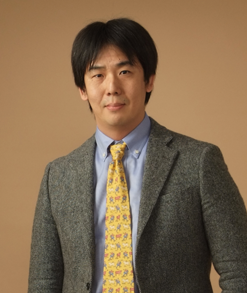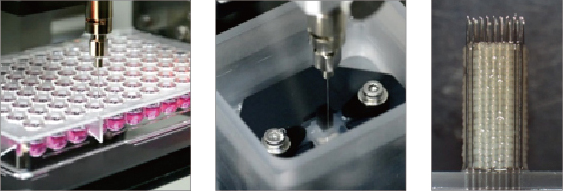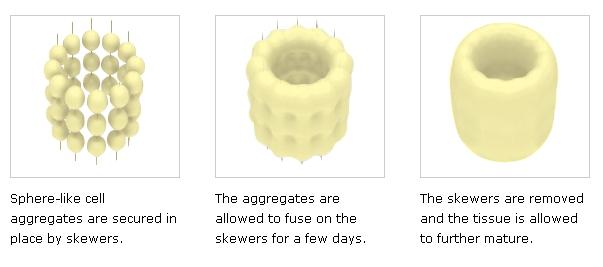Imagine, if you will, a powerful robotic-limbed appliance with a human inside wrapped in 3D printed and cultured protective tissue. It’s capable of lifting enormous loads, and the human operator within can be repaired using the latest in bioprinting technology and materials.
It may well happen sooner than later, and a deal announced by a group of Japanese firms points the way forward.
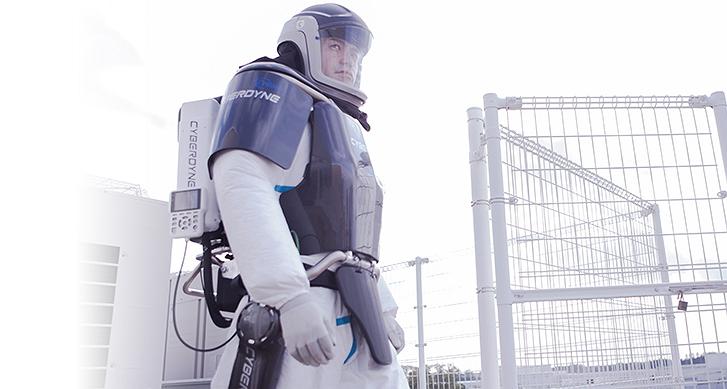
Cyfuse Biomedical and Cyberdyne signed a $12 million deal to develop and market the Regenova 3D tissue printing system.
Cyfuse Biomedical, the Japanese developers of a 3D printing process which can produce human tissue using a novel, robotic process, just raised 1.4 billion yen ($12 million USD) from investors who include robotic-human appliance developers, Cyberdyne Inc and a larger group of investors.
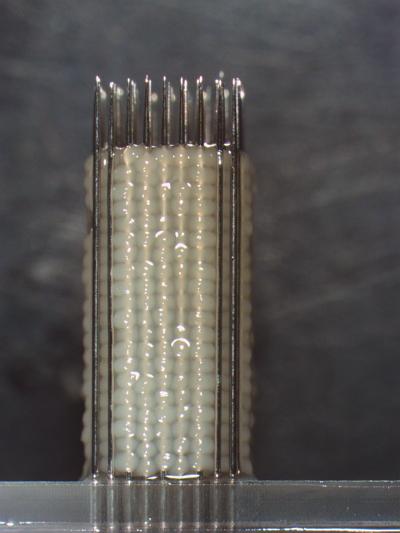 Cyfuse says they agreed to sell an undisclosed stake in their operations to a dozen Japanese investors, among them medical-device manufacturer Shibuya Kogyo Co. and health information provider M3 Inc.
Cyfuse says they agreed to sell an undisclosed stake in their operations to a dozen Japanese investors, among them medical-device manufacturer Shibuya Kogyo Co. and health information provider M3 Inc.
Cyfuse is the developer of Regenova, a robotic-controlled 3D printer they created with Shibuya Kogyo. The device turns living cell aggregates into artificial human tissue, and both companies say the tissue cultures will soon be used to test new products – and might eventually be used to construct human organs from an individual’s own stem cells.
The CEO of Cyfuse, Koji Kuchiishi, says the Tokyo firm is looking forward to a startling future where bioprinting takes primacy in medicine.
“Bio 3D printing technology is going to push regenerative medicine forward,” Kuchiishi says. “Someday, we are going to see a world where we can regenerate body parts such as blood vessels, hearts and livers. Various human tissue and organs will be regenerated and such technologies will be put to practical use in the future, but all organs need blood vessels. So we think technologies to create blood vessels will be vital.”
Kuchiishi, a former McKinsey & Co. consultant and Panasonic engineer, founded Cyfuse in 2010 with regenerative medicine researcher Dr. Koichi Nakayama of Saga University and Kyushu University. At this stage, Cyfuse sells 3D printing systems to Japanese universities for research purposes for around $0.5 million a piece and the firm plans to begin selling them outside the Japanese market later this year.
The company has, to this point, raised a total $16.5 million with it’s system which can print cartilage and subchondral bone, tubular tissues such as blood vessels, digestive and urinary organs and even miniature livers.
It’s said that venture capital firms Jafco Co. and University of Tokyo Edge Capital Co. participated in the funding, and Cyfuse will use the capital to build its sales force and fund clinical trials of the Regenova machine.
The device uses cultured cellular aggregates called ‘spheroids’ which are place on fine needle arrays. The spheroid cells then form a connected, macro-level structure over time without the use of collagen or hydrogel, the building blocks of current methods. Composed of tens of thousands of cells per spheroid, the cultures are placed in a “bioreactor” for days or weeks where aggregation takes place to create the 3D tissues.
Cyfuse says this method enables circulation of the culture medium and oxygen until tissues are mature enough to no longer require it, and that it’s capable of producing “thicker and more elastic tissue” than current processes.
The company’s technology was codified via an exclusive licensing agreement and patent by Kyushu University, “Method for production of three-dimensional structure of cells.”
How soon do you think the future of 3D printed human tissue will arrive? Let us know in the Cyfuse and Cyberdyne forum thread on 3DPB.com.
Subscribe to Our Email Newsletter
Stay up-to-date on all the latest news from the 3D printing industry and receive information and offers from third party vendors.
Print Services
Upload your 3D Models and get them printed quickly and efficiently.
You May Also Like
Consolidation in AM: How 2025 Is Shaping the Industry’s New Normal
The first half of 2025 has been marked by a clear shift in the additive manufacturing (AM) industry. Companies are no longer just focused on developing new tech by themselves....
Etsy Design Rule Change Reduces Selection of 3D Printed Goods
Online marketplace Etsy has implemented a rule change requiring all 3D printed goods on the site to be original designs. The update to the site’s Creativity Standards states, ¨Items produced using...
U.S. Congress Calls Out 3D Printing in Proposal for Commercial Reserve Manufacturing Network
Last week, the U.S. House of Representatives’ Appropriations Committee moved the FY 2026 defense bill forward to the House floor. Included in the legislation is a $131 million proposal for...
Transforming From Tourist to Native: Duro CEO Michael Corr Explains Why the Company Rebuilt its PLM Software on AI
In these early innings of the AI boom, many market analysts have expressed concern that AI spend has gotten too far ahead of the technology’s proven ability to deliver significant...


